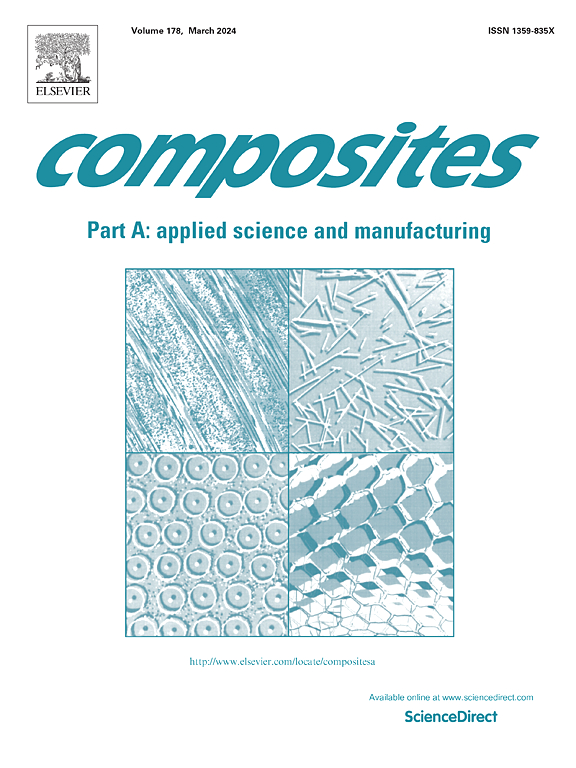Syndiotactic 1,2-polybutadiene with regulable viscoelasticity and crystallinity via a steric hindrance strategy for promoting the dynamic mechanical properties of nanocomposites
IF 8.1
2区 材料科学
Q1 ENGINEERING, MANUFACTURING
Composites Part A: Applied Science and Manufacturing
Pub Date : 2025-01-11
DOI:10.1016/j.compositesa.2025.108723
引用次数: 0
Abstract
Iron-based syndiotactic 1,2-polybutadiene (sPB), a novel semicrystalline elastomer, that can achieve desirable dynamic mechanical properties through programmatical adjustment of its structure–activity relationships. sPB was endowed with controllable viscoelasticity and crystallinity based on the influence of efficient combination of two kinds of alkylaluminiums with different steric hindrances on alternating and continuous insertion of butadiene monomers in syndiotactic 1,2-mode. This resulted in a semicrystalline interpenetrating phase structure advantageous for phase homogeneity and covulcanization within the matrix. Furthermore, sPB with the most suitable performance was applied to green tire tread, and the crystal domains of sPB facilitated filler dispersion and ultimately formed multiple crosslinking networks via synergistic effects. Accordingly, the abrasion resistance of nanocomposites incorporated with sPB increased by 25.2%, wet-skid resistance increased by 12.8%, and rolling resistance decreased by 10.0%. This work could provide a theoretical basis for the effective designable synthesis of polymers to improve the dynamic mechanical properties of nanocomposites.

求助全文
约1分钟内获得全文
求助全文
来源期刊

Composites Part A: Applied Science and Manufacturing
工程技术-材料科学:复合
CiteScore
15.20
自引率
5.70%
发文量
492
审稿时长
30 days
期刊介绍:
Composites Part A: Applied Science and Manufacturing is a comprehensive journal that publishes original research papers, review articles, case studies, short communications, and letters covering various aspects of composite materials science and technology. This includes fibrous and particulate reinforcements in polymeric, metallic, and ceramic matrices, as well as 'natural' composites like wood and biological materials. The journal addresses topics such as properties, design, and manufacture of reinforcing fibers and particles, novel architectures and concepts, multifunctional composites, advancements in fabrication and processing, manufacturing science, process modeling, experimental mechanics, microstructural characterization, interfaces, prediction and measurement of mechanical, physical, and chemical behavior, and performance in service. Additionally, articles on economic and commercial aspects, design, and case studies are welcomed. All submissions undergo rigorous peer review to ensure they contribute significantly and innovatively, maintaining high standards for content and presentation. The editorial team aims to expedite the review process for prompt publication.
 求助内容:
求助内容: 应助结果提醒方式:
应助结果提醒方式:


